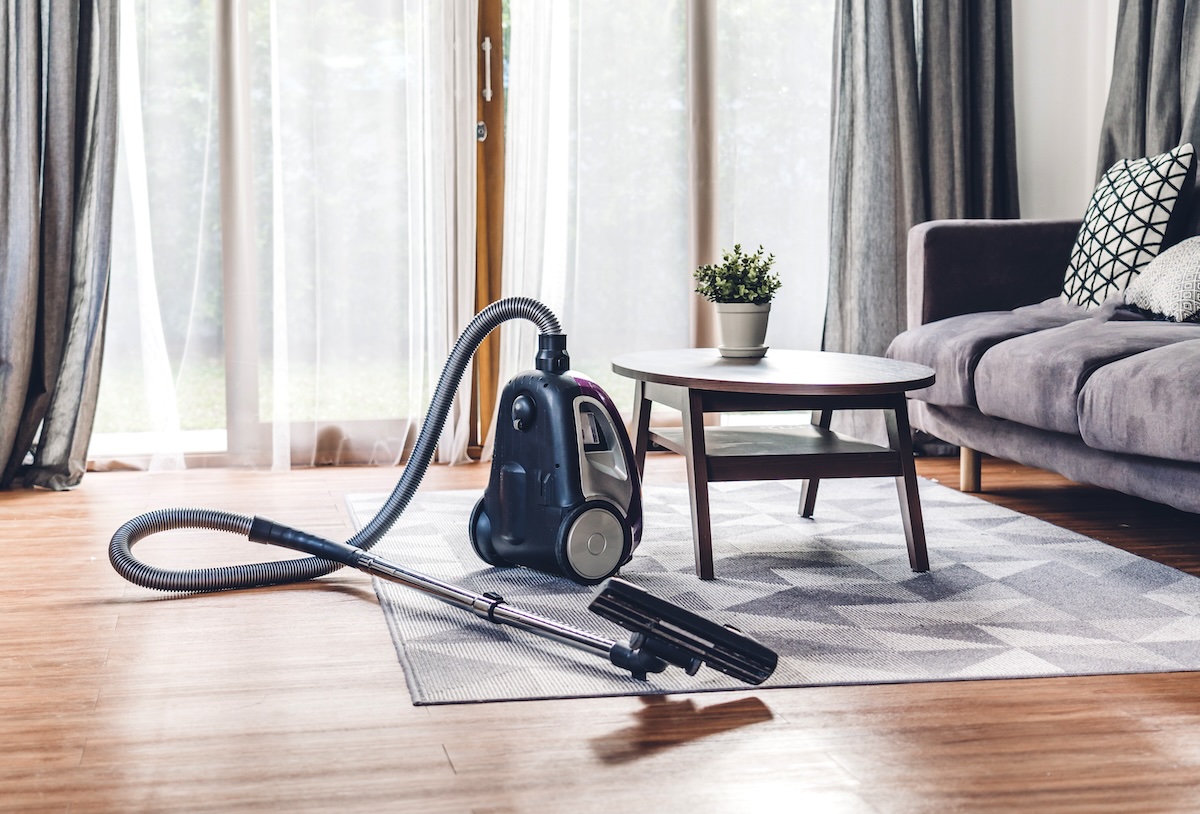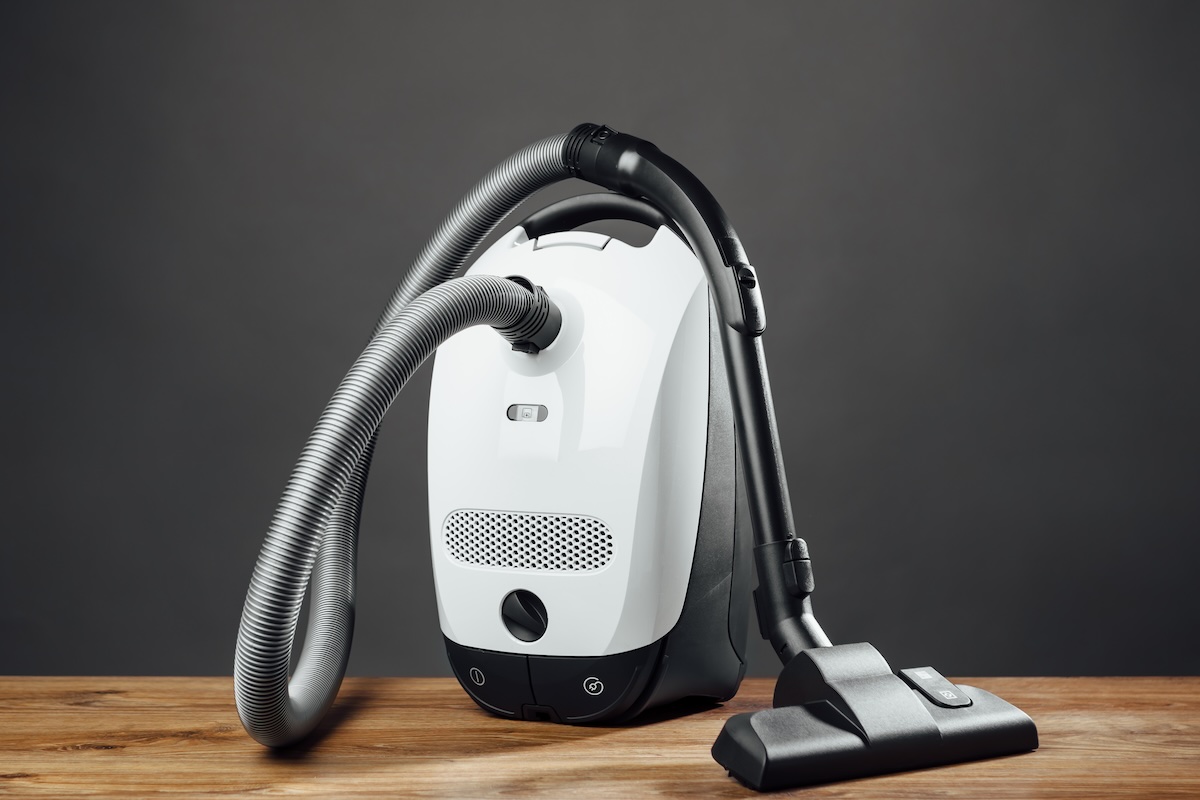Most people don’t think much about their vacuum until it stops doing its job. The suction drops off, a smell starts rising from the exhaust, or the brushroll begins to squeal across the carpet—and that’s when the question usually comes up: how often should I be servicing this thing?
It sounds like a simple question, but there isn’t one answer that’ll fit everyone’s situation. Vacuums wear out according to the lives they live. That is, the same model used in a small apartment with hardwood floors might stay pristine for years, while its twin cleaning a house with pets, rugs, and daily traffic could be limping along after eighteen months. The difference can come down to environment, workload, and the normal routine of care that either happens or doesn’t.
When you compare budget vacuums vs premium vacuum cleaners, it’s important to be aware that every machine—whether a $150 upright or a German-built canister that’s older than your car—will experience wear. Motors heat, filters clog, and seals dry—some faster than others. The main difference is that only some vacuums are designed to recover from these issues:
- Premium, serviceable vacuums can be opened, cleaned, and brought back to full power. They have replaceable motor brushes, accessible seals, and parts catalogs that can typically support repairs for decades.
- Budget vacuums, once strained, simply edge toward replacement. Their motors, housings, and wiring harnesses are usually sealed and non-serviceable. The user-replaceable parts (filters, belts, sometimes brushrolls) are the only intended maintenance. Once a bearing seizes, a switch fails, or a motor overheats, the manufacturer expects you to throw out the machine and buy a new one.
A lot of people, understandably, tend to think of a vacuum as an appliance that either “works” or “doesn’t.” But every vacuum repair shop technician who’s been inside one knows there’s a long middle ground. You can open two identical units, both technically running, and instantly see which one’s been cared for. One looks lived-in but solid—clear filters, tight wiring, brushroll spinning freely. The other’s choked with dust, cords pulled thin from yanking, filters gray and crumbling. They might have been bought on the same day, but one’s already on borrowed time.
Routine Maintenance That Keeps Vacuum Cleaners Working

Routine servicing doesn’t mean bringing it to a shop every few months. It’s more about knowing what wear looks like before it becomes damage. For most homes, that comes down to three time frames—monthly, yearly, and long-term.
Monthly or every few uses:
Pop the brushroll out and clear any hair or threads wrapped around the bearings. Check the filters, especially the pre-motor one. If you can tap out dust or rinse it and let it dry overnight, you’re helping the motor breathe freely. This alone can extend the motor’s life dramatically. A clogged filter traps heat; heat shortens insulation life. That’s how “normal use” becomes a dead motor.
Once or twice a year:
A deeper clean—hoses off, clogs checked, gasket seats wiped down, belts inspected. On machines that use replaceable bags, swap them before they overfill; that extra weight of fine dust can push particles into the motor chamber. On bagless models, remove and clean the cyclone assembly if possible—it’s where most loss of suction begins.
When to Let a Professional Step In
Every few years—or sooner, if you notice performance dropping even after cleaning—it’s worth having a technician open it up. Think of it as a checkup, not a repair. They’ll replace the belt if it’s stretched, clean the motor housing, and re-lubricate bearings most owners don’t even know exist. It’s a small service that resets the machine’s lifespan back toward its original curve.

At a vacuum shop, a machine can often be stripped down to the frame, the motor brushed out, new filters and seals installed. With well-built machines, you can see that it’s more like maintaining a high-end power tool than, say, fixing a toaster or a coffee maker. For those who haven’t seen it before, it’s mechanical, tactile, and oddly satisfying.
Even better, the cost of this service is almost always less than the depreciation you’d pay buying cheap vacuums over and over. To put it another way, regular vacuum service is what keeps a solid machine from joining the pile of cracked plastic uprights in a landfill.
How Use Conditions Change the Schedule
A vacuum’s service interval isn’t about the calendar so much as what it’s up against, and what type(s) of flooring it’s used on. Carpet fibers, pet dander, and fine dust all wear components in different ways.
- Machines used mostly on hard floors collect surface dust and larger debris. Their filters load slowly, belts last longer, and brushroll bearings stay cleaner. A check every few months and a professional service every three to five years is usually enough.
- On carpeted floors, friction and embedded grit increase dramatically. Brushrolls wear faster, suction channels narrow from packed lint, and motors run hotter. Here, annual professional servicing keeps airflow and efficiency where they belong. A stretched belt or worn brush strip can cut cleaning power in half long before the motor shows any sign of fatigue.
- Add pets and the schedule tightens again. Pet hair wraps around bearings, compresses in hoses, and builds resistance against airflow. In homes with heavy shedding, brushrolls often need cleaning weekly, filters monthly, and professional service every year or two to keep heat and strain from building up.
- Those with allergy-grade filtration systems—sealed HEPA systems, multi-stage canisters—should be even stricter. Filters load quickly with microscopic debris and lose efficiency without visible warning. Replacing them on schedule is as much about protecting the machine as it is about air quality. A vacuum that breathes clean air runs cooler, quieter, and far longer than one struggling through a blocked filter.
Early Warning Signs
You don’t necessarily need a gauge or diagnostic tool to know when a vacuum’s ready for service. The cues are sensory:
A change in tone—when the motor sounds louder, sharper, higher-pitched, or strained—usually means airflow has dropped somewhere. Suction loss that feels inconsistent from one use to the next points to a clog, not a dying motor. And if the brushroll starts chirping or squealing at the ends, the bearings are drying out. Left unchecked, that friction transfers heat straight into the motor housing.
Dust leaking from joints or seams is another signal. That usually comes from a tired gasket or filter seal. Small as it seems, that leak diverts suction and allows abrasive dust into areas it was never meant to reach. On a serviceable machine, the fix is trivial—a new seal or filter seating. On a sealed, disposable design, it often means the beginning of the end.
A faint burnt smell doesn’t always mean a motor failure either; it can just be belt glazing. But it’s the moment to stop and look, not to keep vacuuming. Belts are meant to slip slightly under load, not melt.
The pattern is consistent: any change in sound, suction, or smell is the machine asking for attention. Waiting until it fails generally isn’t cost-saving—it’s can turn a simple belt fix, for example, into a larger issue.
Long-Term Service for High-End Vacuum Cleaners
Machines built for long service don’t need frequent attention, but they do need deliberate attention. Inside a Miele, Sebo, Riccar, or similar well-engineered platform, there might be a motor with carbon brushes that slowly wear down every few thousand hours. There are bearings that need fresh lubrication, and seals that harden over time. Of course, you don’t have to replace these every year—you check them when you notice performance changing, or perhaps as little as every 4 to 6 years as part of routine shop maintenance.
Most owners will never have to open their vacuums deeply enough to see these parts, but technicians can tell their age by sound and resistance. A well-maintained motor runs smooth and even; a neglected one has a slight flutter, like a fan pulling unevenly. When those components are refreshed on schedule, the machine effectively resets its lifespan.
Shops that handle these models keep factory might have parts catalogs going back decades. That continuity—brush sets, motor gaskets, bearings—keeps the service life open-ended. A vacuum that gets this treatment every few years can keep performing like new for twenty or thirty.

It’s the same mechanical principle that applies to any engineered tool: load, friction, and heat decide its future. Servicing doesn’t prevent age, but it keeps age predictable.
Setting a Service Schedule
A reasonable starting point for many households might look like this:
- Light use / hard floors: inspect filters and brushroll quarterly, replace filters yearly, and schedule a full service every 3–5 years.
- Moderate use / mixed floors: check filters monthly, brushroll monthly, and service every 2–3 years.
- Heavy use / pets, carpeted homes: clean filters and brushrolls monthly (or as needed), and service professionally every 1–2 years.
Those intervals shorten or stretch depending on quality. A disposable upright might need replacement by the time a rebuildable canister is due for its first tune-up.
The point isn’t to follow a strict calendar—it’s to establish a routine that fits the machine’s design. Budget vacuums have no real maintenance path beyond filters and belts. Mid-range and BIFL vacuums do, and that’s where the long-term value shows. Once you understand what each interval does—what gets cleaned, what gets replaced—you stop thinking of “servicing” as optional and start seeing it as the thing that keeps the machine earning its keep.
The Payoff of Choosing “Service It” Over “Replace It” Machines

A serviced vacuum doesn’t just last longer—it performs consistently. The suction stays stable, noise remains even, and there’s no gradual slide into mediocrity. Owners notice it most when they switch back to a machine that hasn’t been maintained; the drop-off is immediate.
Over a decade, that steadiness is what separates tools from consumables. A premium canister vac that’s serviced twice in twenty years can easily outlive 5 or 6 budget uprights. (That may sound crazy, but it’s true!) And in practice, that means fewer breakdowns, fewer landfill trips, and a cleaner home from a machine that doesn’t need to prove itself every year with a new model number.
Vacuum cleaner service is the part of ownership that is rarely marketed because it doesn’t sell new boxes. But it’s what keeps a well-built vacuum from becoming disposable. Once you’ve used a well-built machine that’s been maintained on schedule, it’s hard to go back to using anything else.




